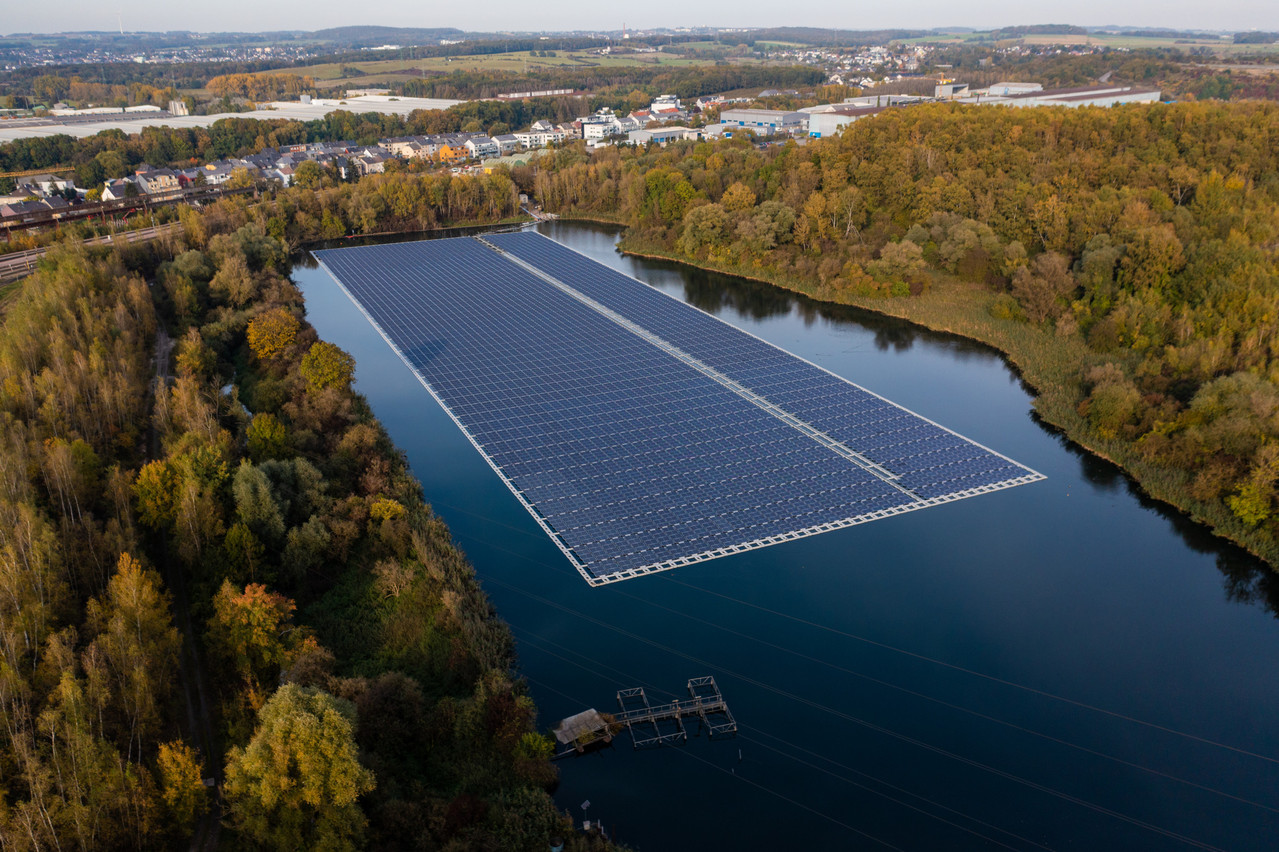Tarkett with 1,019 KW or Kronospan with 4,996 KW: large-scale photovoltaic installations have multiplied in Luxembourg in recent years. This is a recent phenomenon, since of the 23 photovoltaic power plants with a capacity of around 1 MW or more, six were built in 2012 and 2013--on public buildings--and 17 since 2020, by companies, following government calls for tender.
The largest, dating from 2020, is at the Beidweiler site, where the RTL group broadcasts, with an output of almost 5 MW. This is closely followed by the Kronospan plant in Sanem, installed in 2021.
In the country, however, small installations are still in the majority: almost 50% have a capacity of less than 10 KW and more than 95% of less than 100 KW. Of the 10,329 solar installations listed in Luxembourg by the Luxembourg regulator ILR (as of 22 November 2022), large-scale plants represent less than 0.2% of the total.
However, these large installations have largely contributed to the acceleration of photovoltaic growth in Luxembourg, with almost 40 MW installed since 2020 (out of an overall increase of 117 MW). They now represent almost 14% of the country's installed capacity.
From small plants of less than 10 KW on household roofs to those of more than 1 MW in companies, “all installations are good,” assured Paul Zens, president of the Eurosolar association. Smaller ones offer more flexibility, while larger ones require more complex planning. “You have to order the panels and make arrangements with Creos, because 1 MW is a lot of power, and the grid has to be prepared for that,” explained Zens. But large-scale installations also allow panels to be installed that are not exclusively exposed to the south--a feature that would not be profitable with smaller plants.
40 watts per inhabitant in Luxembourg City
The geographical distribution of the installed capacity of these installations shows disparities by municipality and seems to be to the disadvantage of large cities. The capital--the most populated city in the country--has the lowest rate, with an average of 40 watts per inhabitant, while the municipality of Wincrange reaches 3,460 watts per inhabitant, for a national average of 463 watts per inhabitant.
In fact, rural areas are more productive than urban areas: in the previous record for photovoltaic production in the country over one month, last July, the north and the east had high figures (11,934 MWh and 11,095 MWh respectively), much more than in the densely populated areas of the centre and the south (4,386 MWh and 5,842 MWh).
“Buildings in the countryside have a better exposure than in the big cities,” said Zens. “This is due to the density, the height of the buildings, which provide shade, and the size of the available roofs.” However, Zens, who is also a member of the Déi Gréng party and president of the local section in Luxembourg City, blamed the “lack of political will” on the part of the capital's aldermen (a coalition of DP and CSV), which “does nothing to promote solar energy,” as he put it.
13 plants in the pipeline
The increase in installed solar capacity should in any case not stop there, with probably more than 300 MW installed in the country by the end of the year (298.7 MW were already installed on 22 November, against 277 MW on 31 December 2021).
And large-scale installations will continue to make a significant contribution: other large-scale photovoltaic projects are expected to see the light of day in the coming months, including Goodyear’s plan to install 4,420 KW in Colmar-Berg. In total, 13 projects of more than 1 MW are already underway, with a total capacity of almost 20 MW.
This story was first published in French on . It has been translated and edited for Delano.
